Waveguide Junctions
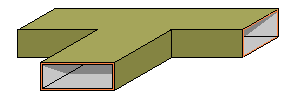 E-field in-phase
E-field in-phase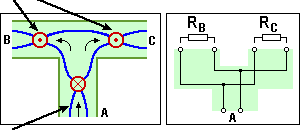
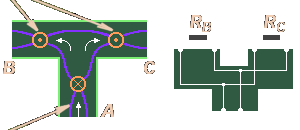 | |
| H-field | Replacement circuit diagram |
Figure 1: H-type T- junction
Waveguide Junctions
Different types of junctions affect the energy in different ways. The “T–Junction” is the most simple of the commonly used waveguide junctions. T–junctions are divided into two basic types, the E–TYPE and the H–TYPE.
H-type T-junction
An H-type T-junction is illustrated in the beside figure. It is called an H-type T-junction because the long axis of the “B” arm is parallel to the plane of the magnetic lines of force in the waveguide. The E-field is fed into arm A and in-phase outputs are obtained from the B and C arms. The reverse is also true.
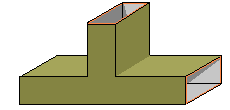

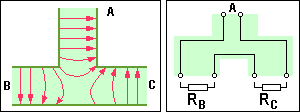
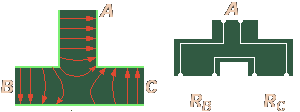 | |
| E-type T- junction | Replacement circuit diagram |
Figure 2: E-type T- junction
E-type T-junction
This junction is called an E- type T junction because the junction arm extends from the main waveguide in the same direction as the E-field in the waveguide. The outputs will be 180° out of phase with each other.
Magic-T-Hybrid Junction
A simplified version of the magic-T-hybrid junction is shown in the figure. The magic-T junction can be described as a dual electromagnetic plane type of T-junction. It is a combination of the H-type and E-type T.junction therefore. The most common applications of this type of junction are for example as the mixer section for microwave radar receivers or as a part of a measurement system.
If a signal is fed into the E-plane arm of the magic-T, it will divide into two out-of-phase components (arm B and C). The signal entering the E-arm will not enter the H-plane arm because of the zero potential existing at the entrance of the H-plane arm. The potential must be zero at this point to satisfy the boundary conditions of the E-plane arm.
Normally a magic-T needs an impedance matching (shown in the figure as matching screws).
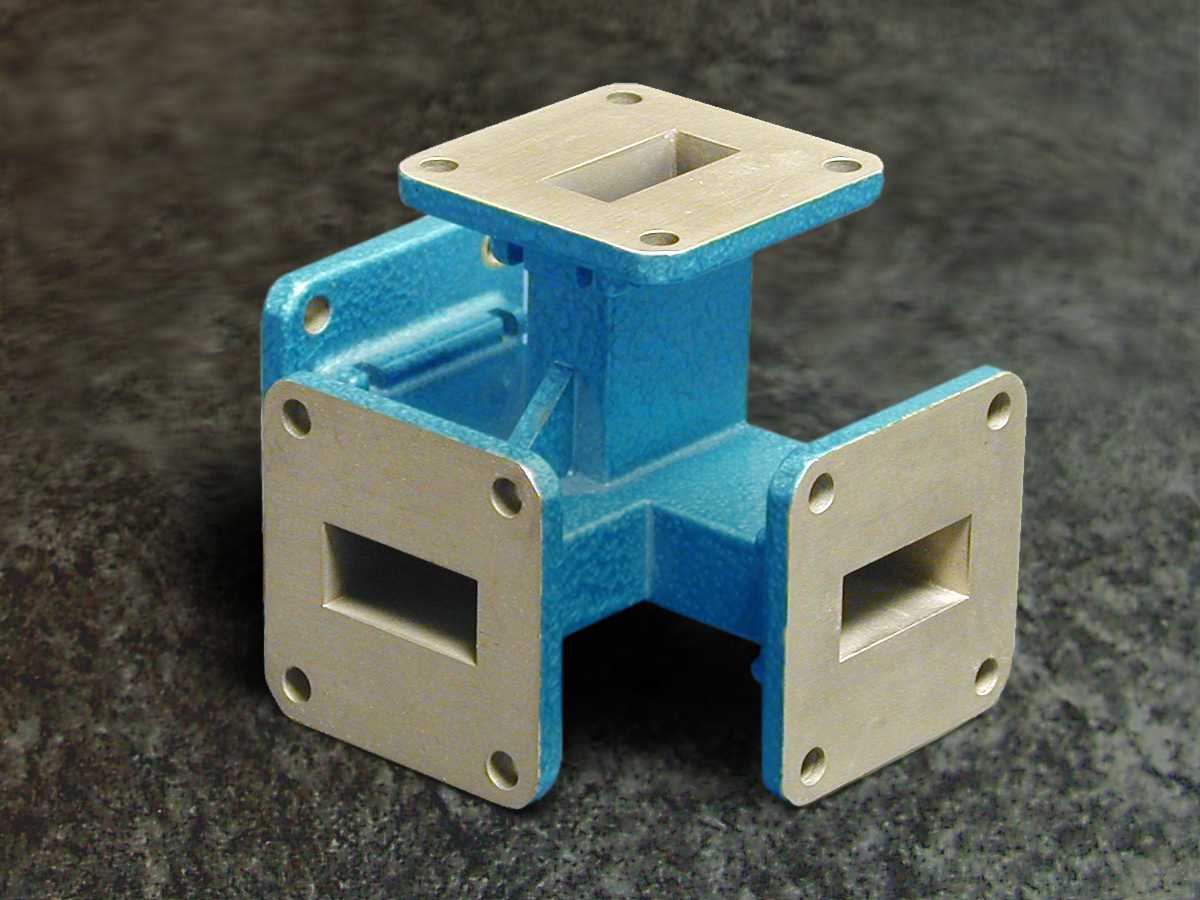
Figure 4: Magic-T Hybrid (real)
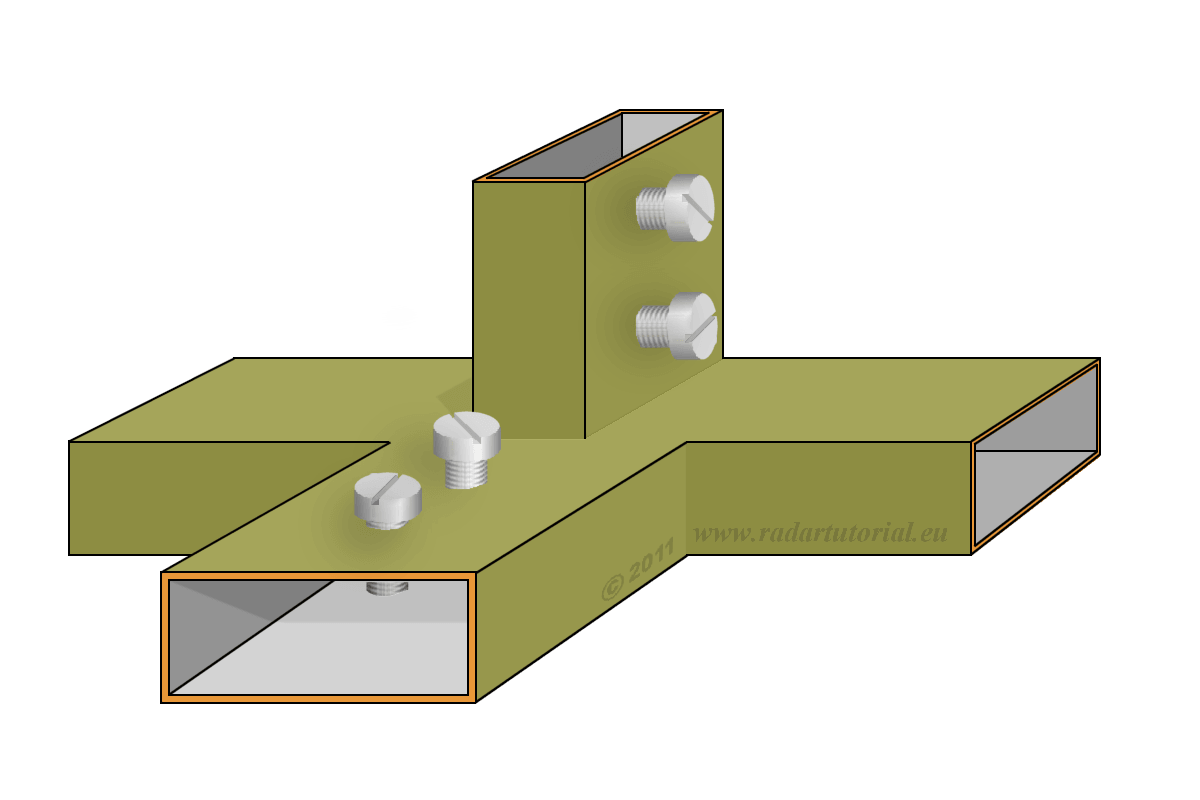
screws
Figure 3: Magic-T Hybrid (Schematic)
